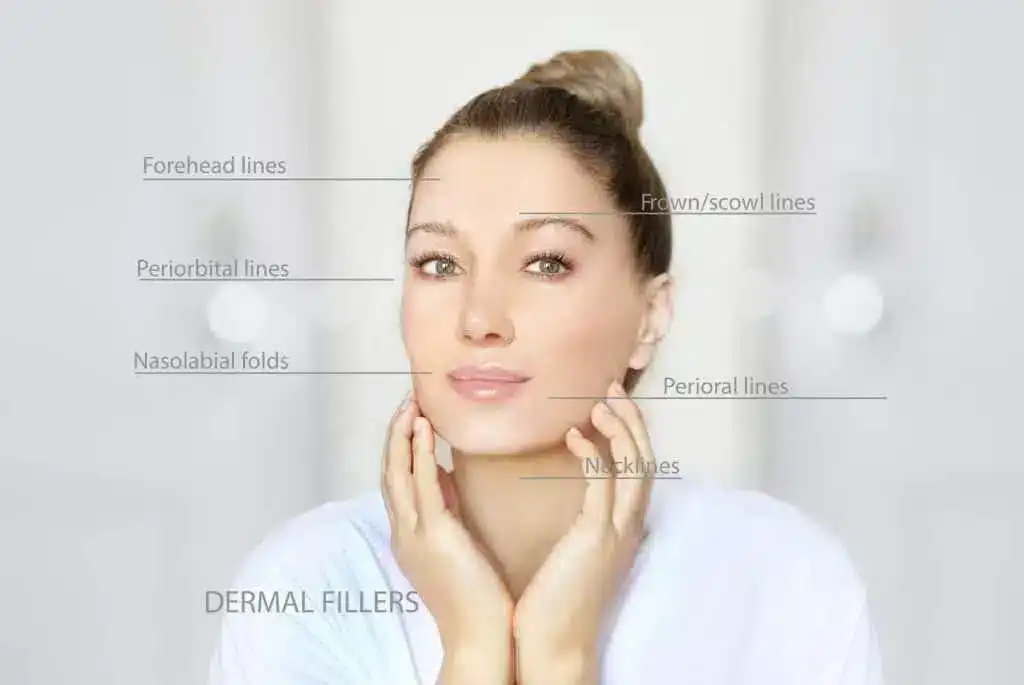
What Are the Different Types of Dermal Fillers?
David Fuller
Last Updated On: October 17, 2024
Disclaimer: The contents of this article should not be construed as medical advice but only for informational purposes. Medsupplysolutions.com staff does not review any of these articles for medical validity. Medsupplysolutions does not endorse the opinions or views expressed in this article. Please always seek professional medical advice from licensed doctor.
Dermal filler injections have gone through a lot of changes over the years. From organic to synthetic fillers, many different types of dermal fillers have been created and innovated since the invention of the syringe in the 1800s.
One of the earliest substances used for dermal fillers was paraffin. It was used in augmentation, but the crude substance came with a lot of complications. Since then, scientists have been trying to develop safer and more effective dermal fillers. The earliest dermal filler that was FDA-approved (in 1981) for cosmetic purposes was bovine collagen. Over the last 40 years, other types have filled the market with varying levels of effectiveness, safety, and duration.
Types of dermal fillers
- Hyaluronic acid (Restylane, Juvederm, others) – This is the most common type of dermal filler available today. It is affordable, safe, versatile, and can be created with varying concentrations to treat multiple specific cosmetic problems. Hyaluronic acid is a natural component of the skin’s connective tissue. Because of this, it is easily integrated into the body and is considered quite safe.
Another feature of its safety is the fact that it is easily reversed. Hyaluronic acid has a natural removal tool in the form of hyaluronidase. In case there is a need to remove the fillers such as when the patient experiences vascular occlusion. It is a quick and simple fix to inject hyaluronidase in the area to dissolve the filler quickly.
A newer variation of hyaluronic acid called NASHA or non-animal stabilized hyaluronic acid further improved the safety, look, and longevity of the dermal fillers by synthesizing it from cultured bacteria instead of retrieving it from animal sources.
Its versatility comes from the fact that its composition and concentration can be controlled at the molecular level, allowing for more specific solutions to wrinkles and lines in different parts of the face. Depending on the concentration or composition of the hyaluronic acid, the duration of the effect can vary wildly, but it generally lasts between 6 months to 2 years.
- Calcium hydroxylapatite (Radiesse). This filler is generally more viscous and provides more structure than hyaluronic acid fillers. Because of its consistency, it is usually not used for fine lines and shallow wrinkles. It is mostly used for contouring, especially in the jaw line. It can also be used for adding volume in sunken cheeks and for deeper wrinkles and skin folds. Since it is also naturally found in the body, it is also considered a safe dermal filler. The human body breaks down the calcium at a slower rate than hyaluronic acid so these types of fillers usually last longer. In general, it can last up to a year when used in contouring and up to 3 years when used as a filler for deep wrinkles and folds.
- Fat grafting. This is not necessarily a dermal filler product, but a technique wherein the patient’s own fat is extracted using liposuction from a different area on their body such as the abdomen or thighs and then injected into areas that need filling or volume. Since it is taken from the patient’s own body, there is virtually no risk of sensitivity reactions. It takes a while for the full effects to show (around 6 months), but once it has settled, results will be permanent. The areas where the fat cells were taken will no longer regenerate new fat cells and the areas where it is injected will retain the volume for the rest of the patient’s life. Though this has the advantage of lasting a lifetime, there are some downsides as well. It is a more involved process to extract the fats and transfer them to a different part of the body compared to the normal way of injecting dermal fillers. Also some of the fat volume may be absorbed by the body, causing a less pronounced effect than expected, meaning additional procedures may be needed.
- Permanent soft tissue filler (Bellafill). Another permanent way to get the effects of dermal fillers is by using permanent soft tissue fillers. These types of fillers use substances that are not readily absorbed by the body, so it has long-term to permanent effects. These include substances such as polymethylmethacrylate microspheres, silicone, or hydrogel polymers. These permanent fillers have fallen out of use compared to the temporary fillers available nowadays. Aside from the low cost of the temporary fillers, these permanent fillers also have more severe side effects and complications that may be difficult to reverse unlike hyaluronic acid. Usually when it is necessary to remove permanent fillers, the patient would need to undergo surgery and in some cases, the permanent fillers may not be removed completely.
The permanence of effects from application of the filler can also have a downside in the sense that there is limited leeway to adjust or change the appearance after the permanent filler is injected. Due to this, it is generally not recommended to provide permanent filler treatment to patients right away. There are situations where a temporary alternative would be safer, reversible, and will allow for more adjustment as they come back for subsequent injections.
- Poly-L-lactic acid (Sculptra). This type of filler is generally used to restore volume loss in the face due to aging or illness. Instead of hyaluronic acid, it uses Poly-L-lactic acid to provide support and create structure in the skin. While it fills the skin, it also stimulates the production of collagen to further add to the volume. Over time, the poly-L-lactic acid gets broken down into water and carbon dioxide that is metabolized by the body and the collagen will replace the PLLA structures, adding and maintaining the facial volume. This process takes place over months so results are natural-looking. After assessing the areas that need volume, PLLA is injected into these areas over multiple sessions. Once it is injected, the effects will usually last two years. After that, additional injections will be needed to maintain the effects.
Conclusion
With all the different options available, there really isn’t one “best” type of dermal filler. All of them have their pros and cons and the best way to determine which is the right fit for you is to discuss it with your dermatologist. Though dermal fillers are non-invasive cosmetic procedures, their effects and possible risks can affect you over a long time, so researching it thoroughly with a specialist will be key in getting the most out of them.
Disclaimer: The contents of this article should not be construed as medical advice but only for informational purposes. Medsupplysolutions.com staff does not review any of these articles for medical validity. Medsupplysolutions does not endorse the opinions or views expressed in this article. Please always seek professional medical advice from licensed doctor.
Products
Cart
Log In
Newsletter
Subscribe for exclusive offers and updates on new arrivals
Share feedback at:
Working Hours
MON - SUN 9AM to 6PM EST
The Most Popular Brands
Med Supply Solutions
Support
Secure checkout is guaranteed with full adherence to PCI DSS payment standards.
Products listed here are guaranteed authentic and manufacturer-sourced.
Pay easily with trusted providers


Copyright 2025. Med Supply Solutions